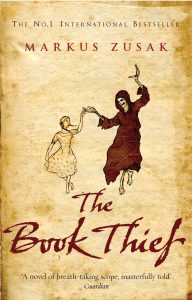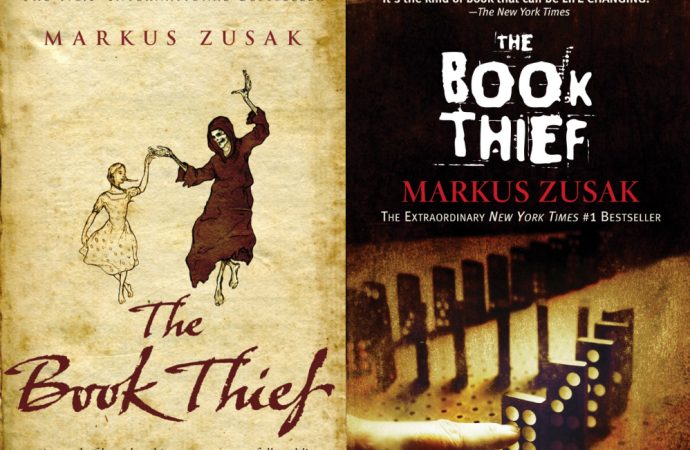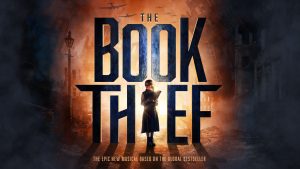Ink and Shadows: Markus Zusak’s The Book Thief Under Fred Wilson’s Lens Introduction In the tapestry of literature, Markus Zusak’s “The Book Thief” stands as a masterpiece, weaving a narrative that transcends conventional storytelling. Today, we embark on a profound exploration, guided by the discerning eye of seasoned critic Fred Wilson. Together, we’ll peel back
Ink and Shadows: Markus Zusak’s The Book Thief Under Fred Wilson’s Lens
Introduction
In the tapestry of literature, Markus Zusak’s “The Book Thief” stands as a masterpiece, weaving a narrative that transcends conventional storytelling. Today, we embark on a profound exploration, guided by the discerning eye of seasoned critic Fred Wilson. Together, we’ll peel back the layers of Zusak’s brilliance and witness the profound impact of his storytelling through Wilson’s analytical lens.
Fred Wilson: A Literary Luminary
In the realm of literary criticism, Fred Wilson stands as a beacon of insight, having dedicated decades to unraveling the intricacies of storytelling. With a career marked by discerning analyses, Wilson offers a unique perspective that invites readers to delve beyond the surface and discover the magic within the ink and shadows of “The Book Thief.”
Decoding Zusak’s Narrative Canvas
Markus Zusak’s narrative style in “The Book Thief” is a mesmerizing blend of poetry and prose, creating a symphony of words that resonates with readers. Wilson, with his keen eye, highlights the author’s distinctive approach, emphasizing the seamless interplay between lyrical expression and gripping storytelling. The thematic richness of Zusak’s work becomes apparent as Wilson delves into the layers of meaning woven into the narrative.
Wilson’s Insight:
“Zusak’s narrative canvas is a masterpiece of contrasts, where poetic elegance coexists with raw prose. This duality elevates the storytelling experience, making every page a journey into the profound.”
Fred Wilson’s Critical Lens
Wilson’s approach to literary analysis is akin to an art form in itself. His method involves a meticulous dissection of the author’s intent, delving into the nuances of language, character development, and thematic elements. In the case of “The Book Thief,” Wilson’s critical lens becomes a powerful instrument, uncovering the subtleties that make Zusak’s work a literary gem.
Wilson’s Approach:
“As a critic, my role is to unearth the layers of meaning within a text. Zusak’s work offers a rich landscape for exploration, where every word is a brushstroke, and every page is a canvas waiting to be deciphered.”

Picture by: https://getthechance.wales/2014/10/12/review-the-book-thief-written-by-markus-zusak-by-sian-thomas/
The Book Thief: A Symphony of Words
Within the pages of “The Book Thief,” Zusak orchestrates a symphony of words, infusing the narrative with a rhythmic quality that resonates with readers. Wilson, attuned to the musicality of prose, sheds light on Zusak’s deliberate crafting of language, turning each sentence into a note in a captivating composition.
Musicality Explored:
“Zusak’s use of language transcends mere storytelling; it’s a melodic journey where each word contributes to the rhythm of the narrative. Wilson’s analysis amplifies the musicality, revealing the author’s intentional orchestration of words.”
Character Alchemy: Zusak’s Craft at Play
In the realm of character development, Zusak’s skill is unparalleled. Wilson’s insights delve into the emotional depth of characters within “The Book Thief,” exploring the evolution and impact of key protagonists. Through Wilson’s critical gaze, readers gain a deeper understanding of Zusak’s character alchemy.
Wilson’s Observation:
“Characters in Zusak’s world are not just figments of imagination; they are vessels of emotion and conduits for the author’s thematic exploration. It’s a testament to Zusak’s craft that each character feels like a living, breathing entity.”
The Art of Foreshadowing: A Collaborative Dance
Zusak’s use of foreshadowing is a literary dance, where anticipation and revelation entwine seamlessly. Wilson, recognizing the symbiotic relationship between author and reader, sheds light on how Zusak masterfully uses foreshadowing to create a sense of inevitability, keeping readers on the edge of their seats.
Foreshadowing Unveiled:
“In ‘The Book Thief,’ foreshadowing is not a mere literary device; it’s a dance of revelation. Zusak invites readers to join this collaborative journey, where each hint serves as a stepping stone towards a carefully crafted destination.”
A Visual Journey: Zusak’s Imagery Through Wilson’s Eyes
The power of visual imagery in “The Book Thief” is a testament to Zusak’s descriptive prowess. Wilson’s perspective on this visual journey delves into the symbiosis of words and imagery, emphasizing how Zusak’s writing paints vivid scenes that linger in the reader’s mind.
Visual Imagery Explored:
“Zusak’s ability to evoke imagery is unparalleled. Each scene is a canvas, and every word is a brushstroke, creating a visual tapestry that enriches the reading experience. Wilson’s analysis unveils the magic behind Zusak’s descriptive mastery.”
Conclusion:
In the union of ink and shadows, Markus Zusak’s “The Book Thief” emerges not just as a novel but as a testament to the artistry of storytelling. Through the discerning eyes of Fred Wilson, readers are invited to partake in a literary journey that transcends the ordinary, where words become symphonies, characters breathe with life, and every page is a canvas waiting to be explored. As we bid farewell to this exploration, the echoes of Zusak’s narrative linger, a reminder that in the hands of a master, every word has the power to cast shadows that reveal the beauty within.


















Leave a Comment
Your email address will not be published. Required fields are marked with *